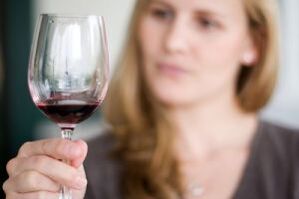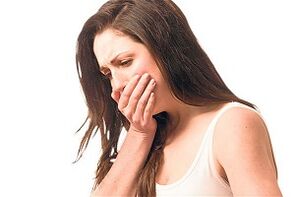What happens if, after taking an antibiotic pill, you miss one or two glasses of alcohol? When can you drink alcohol, how many hours or days after antibiotics can you drink alcohol so as not to endanger your health?
Antibiotics and alcohol
The mandatory consequence of the use of alcohol and antibiotics is a decrease in the effectiveness of treatment. When alcohol is consumed, an inflammatory process develops in the intestines, and local immunity decreases.
At the same time, antibiotic -related disorders in the intestine increased, which were provoked by antibiotic intake.
Violation of drug concentration

Antibiotics begin to act after reaching a sufficiently high therapeutic concentration in the blood. Due to the intake of the same alcoholic beverages, the amount of the drug in the body decreases.
Such drugs, when antibiotics are tried to be taken after alcohol, can be considered useless and even dangerous.
Violation of the treatment regimen, a decrease in drug concentration contributes to increased resistance of pathogenic microflora to the action of antibiotics. And the disease itself, for which antibiotics are prescribed, gets a chance to go from acute to chronic.
The concentration of the drug is reduced due to the fact that the nephrotoxic metabolite ethyl alcohol acetaldehyde interferes with the process of reabsorption of nutrients in the renal tubules.
Water reabsorption is also disrupted, which increases blood viscosity, and the concentration of antibiotics in the blood can change in the most unpredictable ways.
Metabolic characteristics
Antibiotics are drugs that are metabolized in the liver. Busy with the processing of ethyl alcohol, the liver does not have time to neutralize all possible products of metabolism between drugs.
In addition, ethanol can affect liver enzyme activity and even react directly with antibiotics or their metabolites. These properties are expressed in antibacterial drugs differently.
One of the most dangerous features in combining drugs with ethyl alcohol is the interaction of these chemical compounds with the development of disulfiram -like reactions.
Let's think about whether it is possible to drink alcohol, beer, take antibiotics, after which it is not dangerous to drink alcohol, and after that it is impossible.
Disulfiram -like reactions

The disulfiram reaction is used to code alcoholism, accompanied by nausea, seizures, coughing, vomiting, shortness of breath, and a decrease in blood pressure.
Similar effects often occur when taking medications with ethanol.
Here is a list of antibiotics and how long you should not drink alcohol.
The consequences of taking ethanol during antibiotic treatment depend on the dose.
When, after taking a pill or injection of antibiotics, you can drink alcohol - it is calculated based on the time it takes for the antibiotic to be removed from the body.
List of antibiotics
Not to be drunk with alcohol:
- nitroimidazoles - do not combine with alcohol for up to 48 hours (drugs react like disulfiram);
- cephalosporins - the chemical structure of this group resembles the disulfiram molecule in structure, which gives a disulfiram -like reaction with ethyl alcohol. You can drink alcohol every day, with kidney failure, the interval is extended;
- fluoroquinolones - synthetic antibiotics block the nervous system and can cause coma. Drink alcohol no earlier than 1. 5 days;
- tetracycline - a high risk of damage to liver hepatocytes, removed from the body for a long time. You can drink alcohol after 3 days;
- aminoglycosides are ototoxic, nephrotoxic, drug side effects increased, drug toxicity increased. Drink alcohol no earlier than 0. 5 months;
- lincosamides - the central nervous system and liver are affected, disulfiram reaction develops. You can drink alcohol 4 days after treatment;
- macrolides - the risk of liver cirrhosis increases, especially while taking erythromycin, which is slowly eliminated from the body. Alcohol is allowed after 3. 5 days;
- anti -tuberculosis drugs - can cause hepatitis caused by drugs with a fulminant course. Alcoholic beverages are prohibited!
The rate of elimination of antibacterial drugs from different body environments varies. Therefore, if aminoglycosides are removed from the blood in adults in 2. 5 hours on average, then from the ear fluid in this time can be up to 350 hours.
Given the toxicity of aminoglycosides, it is easy to understand that drinking alcohol within 2 weeks after treatment can cause deafness.
Interaction
Reactions such as disulfiram in antibiotic treatment and alcohol use develop because they block the synthesis of enzymes that destroy ethanol molecules into medium substances.
The result is an increase in the blood concentration of the decomposition intermediate product of ethyl alcohol - acetaldehyde. The ethanol metabolite acetaldehyde is more toxic than ethyl alcohol itself.
Lack of liver enzymes, caused by toxic effects on the liver, leads to a decrease in norepinephrine synthesis, which is why the symptoms of intoxication the next day appear brighter and more difficult to tolerate.
Effect

The combination of small doses of alcohol with medication may not appear at all, but when large doses of alcohol are consumed, the side effects of both medication and ethyl alcohol are intensified.
One of the most dangerous consequences of combining alcohol with antibiotics is a disulfiram -like reaction. The danger of this condition is that it is covered up by alcohol poisoning and is not recognized by others as a danger signal.
The disulfiram reaction is caused by an increase in the concentration of acetaldehyde in the blood and is indicated by symptoms:
- pounding;
- nausea vomiting;
- tide, feeling of heat;
- dizziness;
- stomachache;
- a sudden drop in pressure.
If the alcohol level in the patient’s blood is higher than 125 mg / 100 ml and the victim does not get help in a timely manner, then the possibility of the result can be fatal.
How to combine
Some drugs should not be combined with ethyl alcohol in any dose:
- nitroimidazoles;
- a group of cephalosporins;
- fluoroquinolones;
- aminoglycoside.
How many days after antibiotics can you drink with alcohol, can you stop treatment for a few seconds?
It is best not to combine antibiotics and alcohol at all and not to take ethanol during treatment. If for some reason this is impossible and you must consume alcoholic beverages, then you can calculate how long after alcohol to drink antibiotics using a special alcohol calculator.
The alcohol calculator takes into account a person’s weight, amount and strength of drinks consumed. So, for a man weighing 70 kg, 100 g of vodka will be completely removed from the body in 5, 8 hours, and 200 g of beer in 1, 44 hours.
It should be noted that all these calculations are estimates, and the actual rate of excretion from the body depends not only on the nature of these chemical compounds, but also on the condition of the kidneys, intestines, and liver.
Production
For complete removal of antibacterial drugs from the body, it must last from 1 to 3, 5 - 5 days. The time of elimination depends on the state of health, age, metabolic characteristics of a person.
In most cases, drinking alcohol while taking antibiotics weakens the effectiveness of treatment, increases drug side effects, provokes disulfiram -like reactions, and is fraught with serious consequences.































